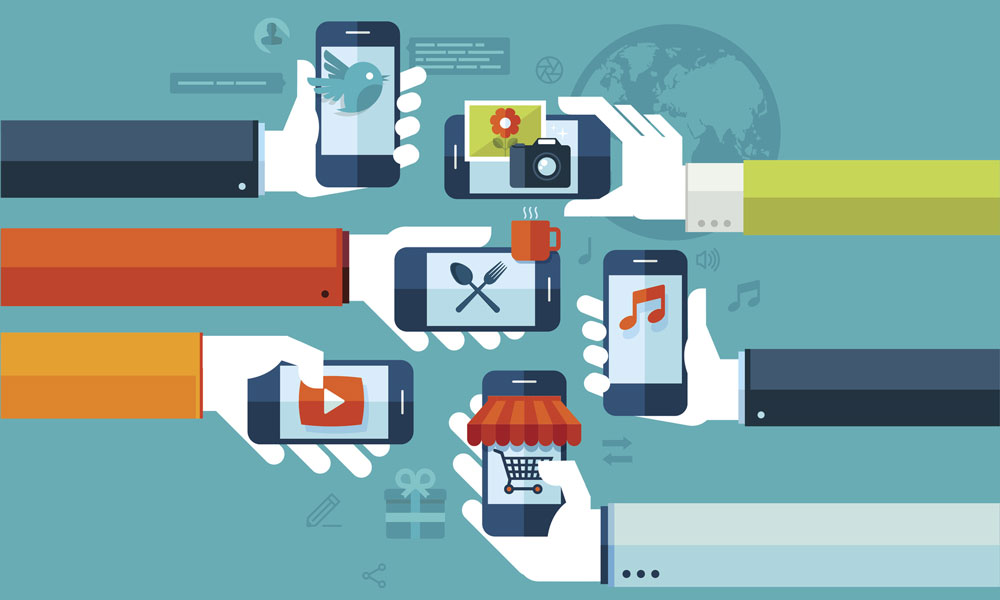
After the Gold Rush: The App Store’s Relevancy Problem
As app stores have matured and solidified, fewer users have been downloading new apps. Here's how Apple and Google are adapting—and what you should consider regarding your own app strategy.
If you happen to be a fan of both apps and outdoor clothing, you might be getting mixed signals about whether to do your shopping with an app.
At the beginning of the month, the clothing brand Patagonia, famed for its “buy less” campaigns, decided that having an app dedicated to its online store didn’t make sense anymore. Why’s that? Well, people were using it so infrequently that they were better off just using the mobile website if they really wanted a new jacket.
Making a successful app requires a lot of investment and time.
This strategy is pretty much the opposite of some of the company’s competitors, which have doubled down on apps. The retailer Moosejaw, for example, just released a virtual reality app that invites clothing fans to immerse themselves in an experience that dives deep into the company’s brand values. (It should be noted that Moosejaw, beyond selling its own gear, also sells Patagonia’s jackets.)
Meanwhile, The North Face has taken advantage of IBM’s Watson supercomputer to integrate artificial intelligence into the customer’s shopping experience. The company saw success with a desktop version of the experience, so it brought it to mobile.
The dramatically different approaches taken by these otherwise similar retailers highlight the complications of the app business in general: Making a successful app requires a lot of investment and time, and if your use case is limited, you may have to spend even more resources creating something so buzzworthy that people will give it a second look.
And that’s a problem that puts Apple at a crossroads this week as this year’s Worldwide Developers Conference (WWDC) gets going. Last week, Recode‘s Peter Kafka cited research from Nomura showing a more than 20 percent decline in app downloads between May 2015 and May 2016.
Of the largest apps, the only ones that showed significant growth were Snapchat, Uber, and HBO Now. But most developers don’t have the scale or resources of Snapchat or Uber—and even the ones that do, like Moosejaw and The North Face, are increasingly relying on gimmickry to prove that their brands deserve a place on customers’ smartphones.
Kafka accompanied his report with a staggering stat: “The average American smartphone user downloads zero apps per month.”
“So you can still break through the saturated app market, if you are very, very, very lucky, and good,” Kafka wrote. “But the odds are stacked against you.”
(For what it’s worth, Mashable writer Karissa Bell responded to Kafka’s take by emphasizing that app usage wasn’t being considered in the context of the Nomura research, but that’s of little consolation to developers who don’t currently have an app on your device.)
One analyst who follows the rankings, Tapdaq CEO Ted Nash, told USA Today this week that it’s become harder than ever for a new app to break through the noise online.
“The top rankings haven’t changed in three to four years,” Nash stated. “The App Store is a complete failure.”
New Strategies
That sounds pretty harsh, and it may be one of the reasons both Apple and Google are rethinking the strategies they use to encourage mobile app uptake.
Last month, Google introduced a new mobile concept for Android called Instant Apps, designed to make it possible to use the Android interface for single-use interactions.
Meanwhile, Apple was said to be looking into widening its subscription strategy to more kinds of apps, so publishers that previously were stuck relying on a single app purchase to make anything reasonable off the app could now charge by the month, making the platform much more sustainable. And going further, The Verge‘s Lauren Goode reported, the iPhone maker would take a smaller percentage of the pie from app makers that had kept a user on the hook for longer than a year.
Both of these strategies reflect important things that have only become clear as app stores have reached maturity: First, some apps are designed to be ephemeral; and second, it’s hard for developers to make money on apps beyond the initial download. In the association space, the best example may be the single app that works only (or primarily) over a three-day event.
The challenge here is this: App development is a lot of work and investment, and when you get the market wrong, you feel the pain a bit more acutely. In 2010, having a mobile app was a great way to stand out. But in 2016, new apps are getting harder than ever to find. (That, by the way, is partly Apple’s fault, as it has failed to improve mobile app discovery despite the issue having been brought up thousands of times since 2012.)
Mobile websites may lack the polish of apps, but they’re generally easier to find and easier to develop, and they ask for less commitment from the user.
In that environment, it’s understandable why Patagonia decided to drop its app—and why you might look at the numbers on the bottom line, and decide to ditch your own.
It’ll be interesting to see if any of the recent moves by Apple or Google can help fix this state of affairs.
(iStock/Thinkstock)






Comments